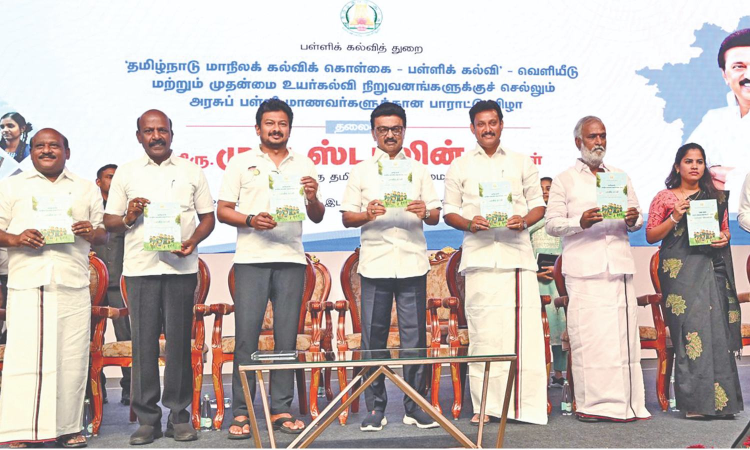Editorial: A SEP in the right direction
The policy document makes no mention of the phrases ‘NEP’, ‘Hindi’ and ‘three-language formula’.

CM Stalin releases the State Education Policy 2025 for School Education at Kotturpuram
The remarkable thing about the Tamil Nadu Government’s State Education Policy (SEP), released by Chief Minister MK Stalin last Thursday, Aug. 7, is the absence of any polemics of language.
The policy document makes no mention of the phrases ‘NEP’, ‘Hindi’ and ‘three-language formula’.
Instead, it calmly reaffirms its preference for Tamil plus English from early schooling to high. This is not meant as a rebuff to the Indo-Gangetic vision of the Union Government’s New Education Policy 2000, but a play on the single theme running through it: Early learning must be steeped in the mother tongue and grow out towards the future with a global and scientific outlook.
By retaining Tamil and English as compulsory languages taught in all schools, the policy aims to ensure that every student studying in Tamil Nadu acquires functional proficiency in both languages and learns about the rich culture of the state while building the foundation for a life in the 21st century.
On other aspects too, there are welcome departures from current trends. One is the SEP’s resolve to buck the tendency to make school education needlessly competitive. It steers clear of the NEP’s penchant for public exams and centralised entrance exams, which give scope for commercialisation and fuel the burnout and dropout phenomena. The board exam at class 11 will be scrapped, and there will be no student detention up to Class 8. Undergraduate admissions for arts and science courses will be based on consolidated marks from Classes 11 and 12. The policy advocates against high-stakes testing, with a view to reducing psychological stress and ensuring a level playing field for rural students and marginalised communities.
However, the demon of competition for seats in prestigious colleges is not so easy to ward off. Despite its anti-stress stance, the SEP does doff its hat to competition by pledging to set up ‘schools of success’ in every block, with facilities and faculty on par with Model Schools that prep students for stiff competition. While there is a pledge to upgrade infrastructure and teaching methods in all schools, there remains the temptation to set up a parallel stream that is tweaked for high performance.
An important reform advocated by the SEP is the need to bridge competency gaps in the languages. Although languages are the vehicle of knowledge, conventional educational policies have relegated them to secondary status, which has led to graduates being trapped in silos, unable to cross over to adjacent opportunities. Quoting the findings of the National Achievement Survey 2024, the SEP notes that competency gaps for language are higher (more than 49 %) than for science and math at grades 3, 6, and 9. This is leading to the emergence of a generation that is well-versed in technology but too tongue-tied to express itself. This gap needs to be addressed right from early schooling, as it used to be until the 1980s.
As a forward-looking policy document, the State Education Policy goes one step further than the customary nod to STEM. In its Agenda for Action, it makes a strong pitch for STEAM (science, technology, engineering, arts, and mathematics). The inclusion of art in the mix is meant to equip learners with “the ability to ask questions, connect ideas, design solutions, and think creatively”.
This is best done by integrating the A into the STEM rather than adding it on as an elective later in college, as is being done now.



